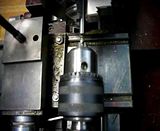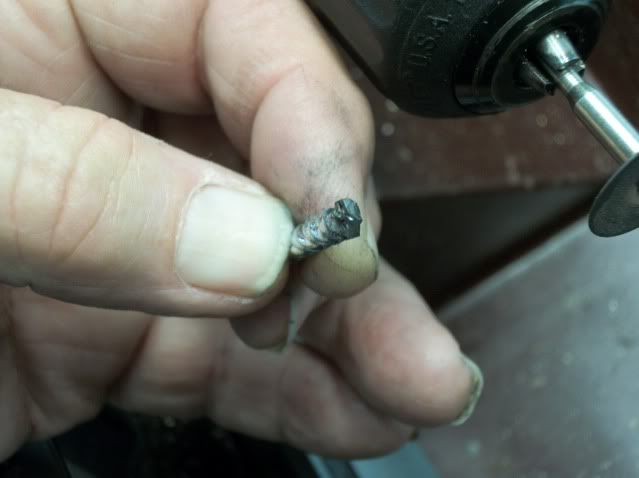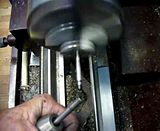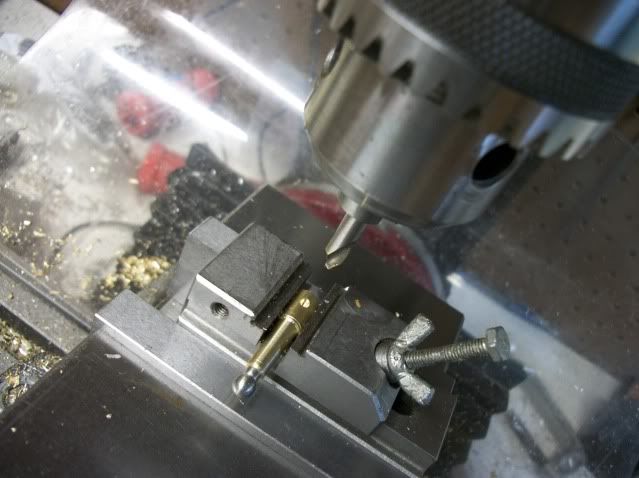- Joined
- Dec 2, 2008
- Messages
- 971
- Reaction score
- 8
I had a piece of 1/4" round HSS, 2" long that needed a 3/16" hole drilled in the end of it. After a lot of thinking and doubt, I decided to go at it with a cheap (less than $5) carbide tipped masonry bit. The bit needed a little modification. The hole only needs to be about 1/4" deep so I cut the length of the bit to about 2" to reduce flex. A masonry bit is designed to work with impact and abrasion an does'nt really have a cutting edge. Cheap diamond wheel took care of that. Working by eye, I shaped the little brazed tip to look like a drill bit. The chip is just a flat piece of carbide with no flutes and is covered with aluminum paint to cover up the brazing. First I ground the two angled faces to a slightly steeper angle and added relief angles which gave pretty good cutting edges. The flat tip where the relief faces met was to big for penetration so I did my best to approximate a split point. The final step was to provide relief angles to the sides of the chip.
With the bit in the tail stock chuck extending only about 1/2", HSS blank in the 3 Jaw, lathe at high speed which is about 2000 RPM on the 9x20, and a dose of cutting oil, the job starts. A lot of force was needed to get penetration and a good brown chip. The force was applied for just a few seconds at a time to keep heat off. More cutting oil would have been better but the results were better than I had hoped. Hear are video of the job.



If anyone wants to know why I need a hole in the end of a high speed steel bit, just ask.
Jerry
With the bit in the tail stock chuck extending only about 1/2", HSS blank in the 3 Jaw, lathe at high speed which is about 2000 RPM on the 9x20, and a dose of cutting oil, the job starts. A lot of force was needed to get penetration and a good brown chip. The force was applied for just a few seconds at a time to keep heat off. More cutting oil would have been better but the results were better than I had hoped. Hear are video of the job.



If anyone wants to know why I need a hole in the end of a high speed steel bit, just ask.
Jerry






